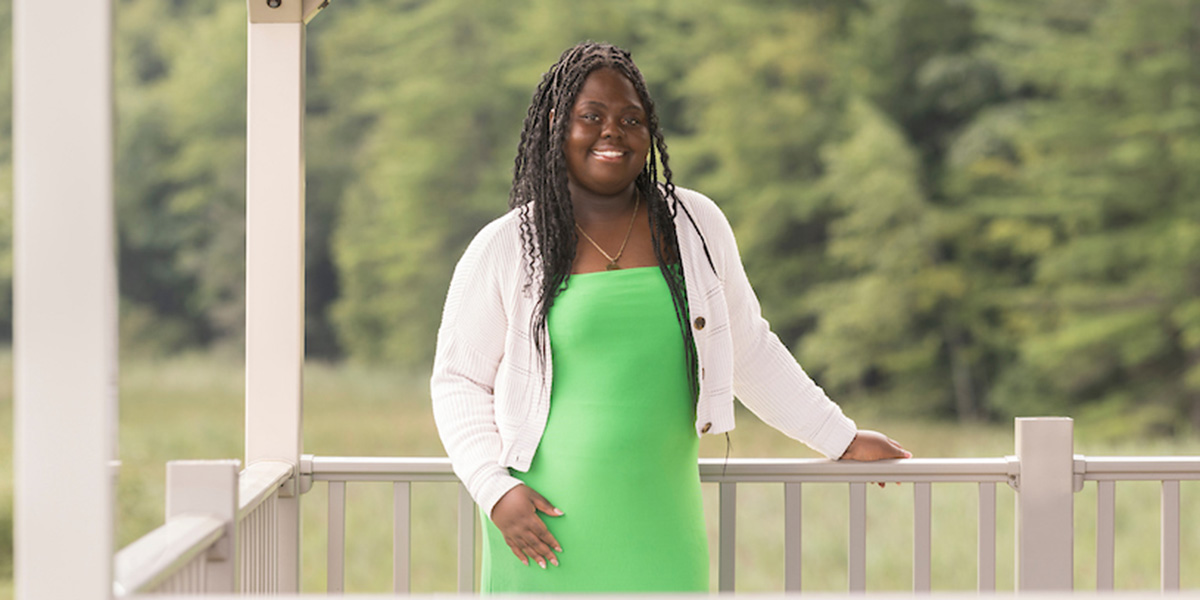Controlled chaos: This disaster management program prepares Decker College students to handle any crisis
Graduates gains skills to prevent, adapt to, prepare for and respond to disasters

As the world heats up and COVID-19 lingers in our cultural memory, the ability to respond to disasters remains a concern, but Binghamton University’s Decker College of Nursing and Health Sciences is equipping graduates with the skills to prevent, adapt to, prepare for and respond to disasters in their communities.
Before we jump into the whole story, let’s meet the team we spoke to:
Rasheema Wright ’21, MPH ’23
- Coordinator, University’s Alcohol, Tobacco and Other Drugs Office
- Bachelor’s in integrative neuroscience, master’s in public health, advanced certificate in disaster management
- Led student distribution of test strips to detect xylazine (a horse tranquilizer) in the opioid drug supply
- Member of Sigma Gamma Rho sorority; facilitates Swim 1922, a water-safety workshop for underrepresented youth
Max Goldfarb ’18, MPH ’21
- Health and medical operations specialist for New York City Emergency Management Department
- Bachelor’s in integrative neuroscience, master’s in public health
- Six years EMT service
- Executive director of Harpur’s Ferry during the COVID-19 pandemic, he kept the organization fully operational during lockdown
Nicholas Terela ’10, BS ’11, MS ’15
- Clinical assistant professor, Decker College
- Undergraduate/graduate degrees in nursing, political science; advanced certificates in disaster management and nursing education
- Two years certified flight nurse, LifeNet of New York
- ER nurse, United Health Services
Laura Terriquez-Kasey, DNP, RN, EMT
- Adjunct associate clinical professor emeritus, Decker College
- 14+ years on disaster medical assistance team
- Responded to 9/11, anthrax, Hurricane Katrina
- Army Nurse Corps veteran, 20+ years
Laura Terriquez-Kasey believes in integrating disaster education and mitigation into global healthcare practices. Her experiences over the years led her to advocate for and later establish Binghamton University’s Advanced Certificate in Disaster Management program.
“No matter where I saw nurses responding, many were not prepared. They had never gotten a disaster education. Many were in a state of shock when they got thrown into a scenario,” Terriquez-Kasey says. “We have to get our students somewhat prepared — for the shock of a disaster itself, but also for all the side things that happen: loss of communication, food, perhaps housing.”
As part of Binghamton’s Master of Public Health program, Max Goldfarb took disaster management classes with Terriquez-Kasey. Now, he helps New Yorkers through emergencies via preparedness, education and response.
“The time to prepare for disaster is not when the mayor says, ‘We’re evacuating New York City.’ Ideally, you’ve put in a little bit of legwork,” Goldfarb says.
Bringing order to chaos
Responsible for the safety of New York City’s 8 million residents, Goldfarb now focuses on bringing order to chaos.
“Everyone here splits their job into two roles: Blue skies versus gray skies,” Goldfarb says. “Blue sky means there’s no declared disaster, and we’re in a steady state. Gray sky means we have a declared emergency that we’re actively responding to.”
On a “blue-sky” day, Goldfarb may focus on citywide planning, such as developing a burn surge response protocol — if an event creates more burn victims than available burn beds, it ensures patients are transported to health centers throughout the state.
On a “gray-sky” day, he may help operate the city’s Emergency Operation Center, facilitating communication and coordinating the multiagency disaster response.
The NYC Emergency Management Department also works behind the scenes to prevent problems. This includes providing education, training and resources to help communities form resiliency and maintaining an emergency radio system of 300 networked facilities connected to a 24/7 Emergency Management watch center, which addresses communication barriers during disasters.
“I’ve never seen an after-action report that doesn’t mention communication,” Goldfarb says. “Communication is always one of the biggest aspects of disaster management.”
Communicating in an all-hazards world
As an educator alongside Terriquez-Kasey and an ER nurse at UHS, Nicholas Terela is well-placed to notice communication issues.
“You have all these different entities playing in a giant sandbox,” he says. “We must do a better job of getting everybody to communicate effectively, not only in our class but locally, at state and national levels, and as a global community.”
Terela believes everyone can be better prepared for disasters and is a proponent of the “all-hazards” perspective: Rather than planning for every detail, individuals and communities should aim to withstand a broad range of problems through training, supply-prepping and effective leadership.
“I want to get people more prepared and encourage students to do so in their communities,” he says. “This way, no matter where they end up — in an office, hospital, clinic, the back of a helicopter or an ambulance — they’ll be better prepared to respond.”
Preparing for unseen disasters
Climate change, the rise in infectious zoonotic diseases and the opioid crisis, though “silent” epidemics, are equally important and just as dangerous as “traditional” weather-based disasters.
In her campus role, Rasheema Wright provides students with education and outreach about substance use, including harm-reduction materials and programming.
“Preparedness is not a state that you come to. It’s not just a final ‘we’re prepared for anything,’” she says. “It’s an ongoing assessment.”
Wright notes that it’s also important to pay attention to disaster situations in neighboring and international regions because seemingly remote problems can swiftly become local ones.
“We may think an issue is distant,” she adds, “but then something comes up, and now it’s in our backyard.”
Like other graduates of Binghamton’s disaster certificate program, she exemplifies the work done in communities daily to prepare for a crisis while remaining equipped to face tomorrow’s uncertainties.
“No matter how prepared we are, no one can do it all. We must depend on each other,” Terriquez-Kasey says. “My job is to teach that to our young people — to make them aware that when they go back to their communities, they are not only protecting themselves and their families but everyone.”

